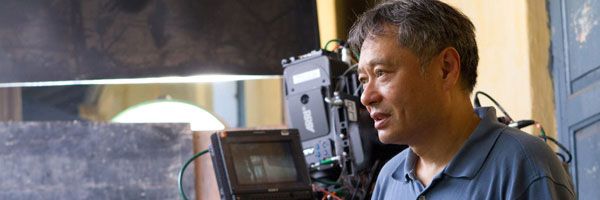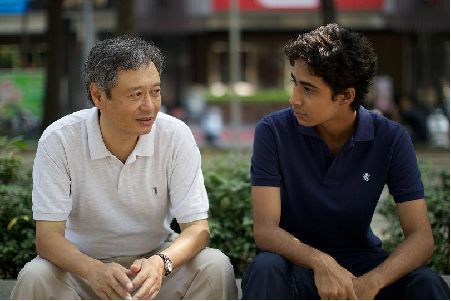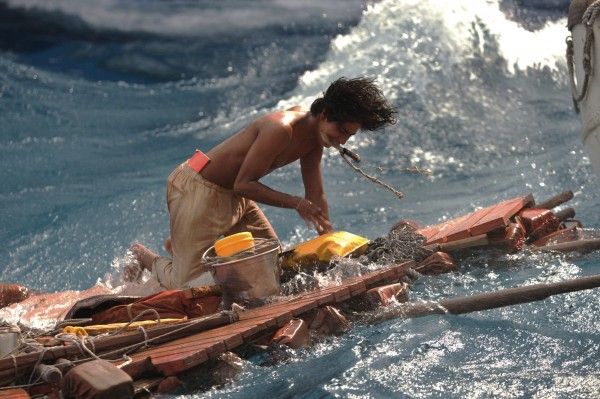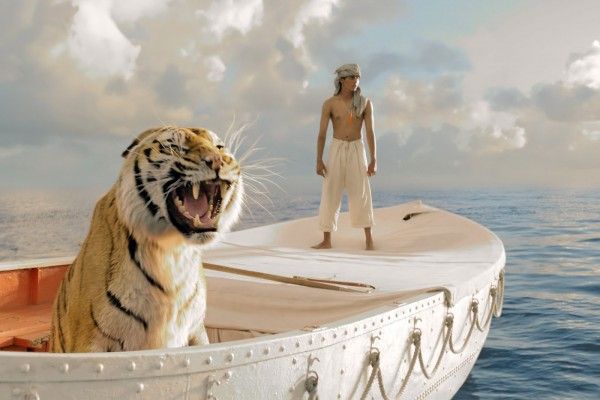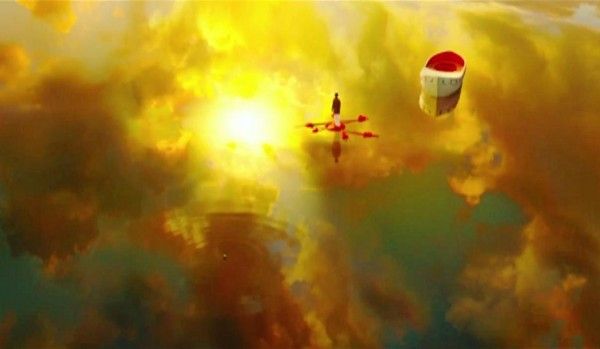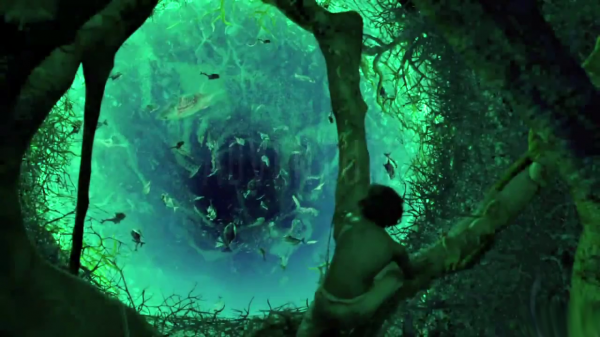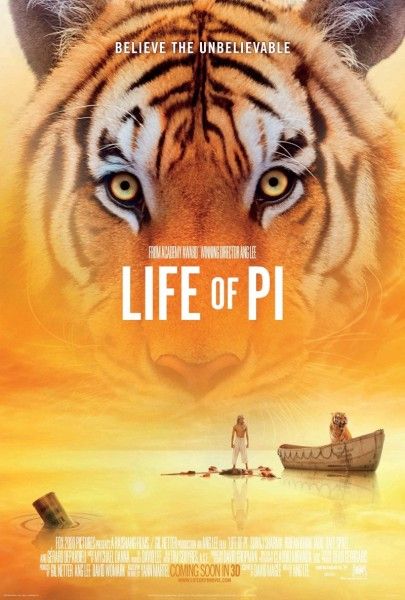Last week at the New York Film Festival, I saw one of my favorite films of the year: Ang Lee's Life of Pi. Based on Yann Martel‘s "unfilmable" 2001 novel, the story centers on a young man (Suraj Sharma) who is stranded at sea with a Bengal tiger following a shipwreck. Loaded with a great script, fantastic direction, amazing cinematography and CGI, and 3D that actually helps tell the story, Life of Pi's universal message of hope, courage, and spirituality is sure to connect with audiences and critics alike when it opens in late November. The film will definitely be up for a number of year-end awards. For more on the film, here's all our previous coverage.
The day after the world premiere I got to sit down with Ang Lee for an exclusive interview. We talked about what it was like to premiere the film at the NYFF, the lightning-fast Twitter reactions, whether he ever thought Life of Pi wouldn't get made given the difficult road to production, how the eventual budget reduction changed the film, deleted scenes and the length of his first cut, the challenges of filming in 3D, whether he'll use 3D on his future projects, how close the film is to completion (he still has 90 visual effects shots that aren't done), future projects, and whether there's a genre he hasn't tackled yet that he still wants to work in. Hit the jump for the video and transcript.
Here's the interview with the full transcript below. Finally, a huge thank you to everyone at 20th Century Fox for making this interview happen.
Collider: You’ve been working on Life of Pi for years and yesterday was really the day that you really unleashed it to the world. What was that feeling like for you after putting so much of your heart and soul into the project for so long?
ANG LEE: Nerve-wracking. The first show to the journalists, that was the first one, so I was very uptight. Then I felt okay about the reception because we did a press conference with good and friendly questions, although people looked serious (laughs). So really, after the show you went to—the premiere—that reception tells me I think the movie worked, so that was a relief. I started to feel deflated.
Since your last movie has come out, social networking with Twitter and Facebook has really taken over in terms of making and breaking a movie like this with the immediate reactions.
LEE: It’s scary.
Did you look on Twitter yesterday or did someone from Fox give you a print-out?
LEE: I haven’t seen the print-out yet because I was running around, but I hear chit-chat. When I was in Las Vegas introducing two scenes at CinemaCon, as I walk off the stage [after the presentation] the Fox people told me “Oh the reactions were great.” I was like, “I just started,” did people start Tweeting halfway through [the presentation]? It’s astonishingly fast these days, it’s shocking.
This is a project that you’ve wanted to get off the ground for a while, and it was a tough one to get going. Was there ever a point that you thought, “this is not gonna get made?”
LEE: Only one time in my career I had that feeling, it was for this movie. It was right before we started the physical pre-production. I pre-visualized the whole ocean part before we made the movie, I was that prepared. At one point they seemed to want to drop it because it was really risky. The budget we proposed was a lot higher than they expected, they wanted to [drop it]. After all, it’s a philosophical book and a literature property, it’s not Batman (laughs). So there was one point I thought I was gonna lose it, but once I get on something I have to finish it; I just kept persuading them and they turned around. One good thing was the international guys really stood behind this movie, they thought they could support this film. So these guys step up and that’s really good, and then they turned around.
To get the greenlight, did you have to reduce a large amount of your budget? How did it change in terms of what you originally wanted to accomplish versus what you actually accomplished?
LEE: It was small changes, actually. Things that don’t have a big impact seem to be crucial. Always when you go out to make a movie you have questions, “What if this doesn’t work? What if that doesn’t work?” you want to cover yourself, you want to bring back enough [footage] so you can do something. So anything that’s not absolutely needed, we would cut it out, which would make me very insecure; everything has to work, and it’s a water movie in 3D with a kid, animals. So the more I do that, the more I’m scared of “What if it doesn’t go the way we want it?” But we had to do that to meet the budget, otherwise we wouldn’t even have a start-date.
How long was your first cut versus how long the movie ended up as?
LEE: About half an hour I cut out.
So you did have a little cushion?
LEE: Yeah, I didn’t think I had that two years ago. But here we are.
Your film has an amazing visual style. How much of the 30 minutes could maybe end up on the Blu-ray, or is it so rough that it would have to be finished?
LEE: I have like four or five pretty good finished scenes, digital, full tiger. Like Pi imitating the tiger, how the tiger responds. I have four or five scenes that I’m gonna put on the DVD, and then some shots I think that are just beautiful that I want to share, that got cut out to make the journey less enduring, so I will put some of that in. I’m not sure about unfinished shots, probably everything on the DVD is finished. Maybe a few unfinished so people can see them.
The scenes is it like five minutes of footage?
LEE: One or two minutes. No more than three minutes.
Are you a fan of doing an extended cut with the footage or are they just deleted scenes?
LEE: They’re deleted scenes. There’s only one movie in my career I’ve had regrets with cutting it shorter, and I think some scenes maybe I shouldn’t have cut. That’s Ride with the Devil, and when Criterion made the Blu-ray version of it I asked if I could put those scenes back and they were very nice about it, they support it, so that I did a director’s cut. Other than that movie, they’re only deleted scenes. No regrets.
The 3D in Life of Pi is just fantastic. Talk a little bit about working with the 3D and how challenging it was.
LEE: 3D is quite a lot more advanced in animated movies; for live-action movies we’re just taking baby steps, we’re just in the beginning. So when I think of doing that I was very excited. It didn’t go as far as I think it should, I’m still a novice, but I think it’s fair to say it’s a new cinematic medium, experience. I think it should be used as a new artistic form, not as a gimmick, not to impress you but the existence of an environment that you view as a theatrical dramatic experience is—you don’t just have the X-Y axis, you have the Z and that makes a difference. You still have the framing, you still use lenses, so most of the cinematic rules and languages still apply but I think it’s a different existence. I suspect mise-en-scène, how you choreograph the scene within the wide shot, probably should play a bigger role, that’s my suspicion. But we’re just in the beginning; I’m just a novice of it. I hope people don’t compare 2D and 3D because 3D’s new, it’s unfair to compare to 2D which is really sophisticated, even when we’re jaded about it. 3D just began, give it a chance, let the equipment and projection system catch up and be better, let the price go down, let more filmmakers get a hold of it more easily. I think it has its way about artistic approaches.
The flying fish scene where the fish are coming out of the water is an exceptionally well done scene in 3D. How long did it take you to put that together?
LEE: Oh a long time. First we pre-visualized it so the actors could act. It took a long time to get that to come to life and to design those coming out of the screen. We had great fun with that. It takes a long time, a year maybe.
It’s a really, really well done scene.
LEE: You feel like you’re in the center of the feeding zone.
Do you think 3D, for you, is going to be something that you use on future movies? Or is it dependent on the story?
LEE: Depending on the budget. I think I prefer 3D to 2D now. Also, because of 3D I have to use a digital camera, which is the way it’s going anyway. That still confuses me, a digital camera versus film. I think, if allowed, 3D is a new film language. I can have more adventure exploring a new media, that’s very exciting. 2D we know most of it, things haven’t changed for decades; it’s the same principles, so 3D’s more exciting. Even dramatically how you position some person, the depth, the existence is different than a flat image even though by itself it has depth, we create the illusion of depth. For example, some of the shots I have to stay closer to the actor because it’s a young actor, I like it closer for some of the shots. I watch 2D scenes next to the camera, then when I go back to my station and watch it in 3D I have to go back and reduce his acting, he has to shrink a little bit because he peeks out more. So it’s something I’m still learning, it’s fresh, so if the budget allows I’ll do it again and just see how far it goes because it’s the frontier, it’s more interesting. It’s still expensive, the projection system can be annoying sometimes, it’s not really regulated or perfected yet, so it’s still expensive. If I do a lower budget I’ll just do 2D, but if the budget allows I think I’ll try 3D.
You mentioned that you’re two weeks away from delivering your final cut to Fox. What wasn’t done in time for the New York Film Festival?
LEE: There are 90 shots of visual effects that are still in the final stages.
So basically you have 90 shots that are almost done.
LEE: Almost done. I think for most people, the audience probably couldn’t tell the difference, but I know they can be better. And the people working know they can be more precise. I’m still doing another round of sound mixing and color timing, pretty technical stuff. I think the movie’s really presentable, nothing was left out that would take you out of the movie. I just need to perfect the job and I still have two weeks to go.
Many filmmakers sign on to a bunch of different projects because it’s so hard to get financing nowadays to get anything made. We don’t read about you signing on to all these different movies, is that by choice for you wanting to focus on one movie at a time?
LEE: It’s just what I am. When I am in the zone making one movie, I just didn’t want to read anything else or do anything else, so I don’t really develop projects. There’s a certain time in the core of making a movie from pre-production to halfway through post-production I don’t read any project, my agent will tell people that “he’s not reading.” And then when I know how the movie’s probably gonna work halfway into post-production, I’ll come along. So I’m a one movie at a time person, I don’t develop. Normally we do a movie then one thing leads to another. If something pops up that catches my attention, then I’ll decide. Basically the movies I make are my life, so I choose how I want to live my life for the next two years. So that’s a decision I have to make. At some point if I feel there are enough elements—it doesn’t even have to have great characters or great stories—it’s just elements that can get my excitement and curiosity for one or two years, then I’ll jump in and I’ll find out what that is. Then I have to do [interviews like this] and rationalize why I do this (laughs).
Mostly it’s like, I get inspired by something and I want to learn that part of filmmaking, I want to delve into that kind of depth. And leading, also, a lot of people. A lot of people, for two years of their life they follow me, and they believe what I believe in. So that’s some responsibility and I’d like to make it worth the effort.
One of the things I love about your work is your diversity. Is there a genre left that you’ve not tackled that you’re really dying to do?
LEE: No, I don’t have a checklist (laughs). Whatever material excites me, they’ll call for a certain genre or combination of genres. It’ll come naturally and I’ll be eager to learn how that thing works. I learn the rules, and I’ll probably break some of them. You have to know the rules, otherwise you have no tools to communicate to the audience, but to keep it fresh you have to break some. I don’t choose genres as the element, but the material itself is the element, then I’ll decide what genre I need. That’s just how I work.

